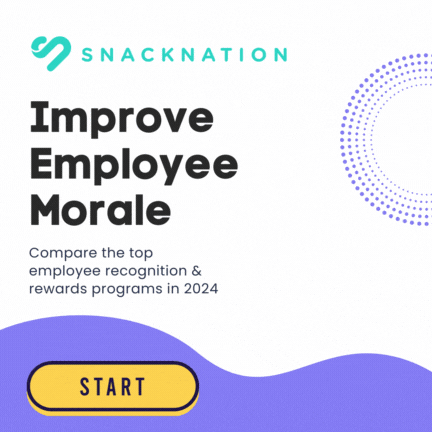A common misconception is that CPG brands only need sophisticated consumer data when things are going wrong.
When a product is selling well, it’s easy to get complacent. After all, if it’s not broken, why fix it?
The truth is, it’s just as important to leverage data and insights when your brand is flying off the shelf – if you want that growth to last, that is.
As I’ve previously argued, point-of-sale data is a bit of a black box. It mostly tells you the what but not the why. Sure, you know someone is buying your product, but who? And for what reason? Knowing the answer to these questions is critically important for long-term success in the CPG space.
Last year we launched SnackNation Insights, a data platform that provides emerging CPG and natural food brands the intelligence they need to better understand their core customers, make faster decisions, and maximize their overall impact. As data and insights become more and more of a focus for us, we’re continuously learning about why different brands needs data. It turns out data is even more important than even we thought – and that importance is only increasing.
Here are three big reasons why you need data, even when you have a hit on your hands.
1. You Don’t Know The Real Reason People Are Buying Your Product
Consumer insights have a way of turning your assumptions on their head.
4505 Meats founder and CEO Ryan Farr knows this firsthand. Farr and the 4505 team make delicious, keto-certified artisanal pork rinds. The brand has been hugely successful, morphing from late-night San Francisco bar treat to a staple at Whole Foods across the U.S., with a steady D2C business to boot.
Initially, Farr assumed the brand’s success was due to its keto-friendly macronutrient profile. “I always thought it was about high protein, zero carbs,” Farr told us on the floor of EXPO West this year.
But after combining survey data and anecdotal feedback from product demos, Farr learned that the trigger for acquiring a new customer wasn’t quite what he thought it was. “We learned that these are actually the top three reasons that people pick up our product: The first one is the packaging looks awesome. The second is that the product looks delicious. And the last one is because it is delicious.”
The two main reasons had nothing to do with taste or function – it was about the visual appeal of the product and packaging. And Farr’s assumption – that the macronutrient content was driving consumption – didn’t even make the top three.
Here’s why that matters. If you believe that a first-time customer is trying your product primarily as a way to cut carbs, you might not think twice about rolling out a new brand aesthetic that emphasizes features and benefits – sabotaging your growth in the process.
2. Your Primary Customer Isn’t Who You Think It Is
I talk to a ton of founders, and one of the most common founding stories I hear is that of the entrepreneur who discovers a breakthrough product simply by solving a problem in his or her own life –
There’s the bodybuilder who wants his protein, but is sick of eating like a bodybuilder (ala Barry Turner of Lenny and Larry’s fame).
There’s the software sales manager trying to avoid the inevitable brain fog that seems to settle in every afternoon around 3:00 (talking to you Will Nitze and IQ Bar).
There’s the young marketing professional and former athlete looking for an easier way to meal prep (hello Rachel Drori and Daily Harvest).
But a common trap for brands who are founded this way is to assume that you are your customer. To put it another way, just because your product initially solved your own problem, that doesn’t mean your customer looks anything like you.
Protes is a fantastic example of a brand who used customer feedback to avoid this pitfall. Co-founder Krik Angacian helped create the protein-infused snack category because he was looking for a more enjoyable way to keep up his desired protein intake after intense workouts.
“About 15 years ago I was coming home from the gym, and I was eating a protein bar – and back then they were really bad,” Krik recalled on the Brand Builder podcast. “I remember just thinking to myself, ‘I am so sick of these, I don’t want any more bars or shakes.’”
So Protes – and the protein chip category – was born when Krik decided to solve his own problem. But as the brand scaled, Krik learned that Protes “was not a meathead brand” like one might assume. Data showed that his customers were mostly women, and they were eating the product as a healthy snack, not as a post-workout protein infusion.
This was one of the inspirations for the brand’s recent refresh, which included new packaging and a new formulation.
For Krik and his business partner, it’s all about anticipating potential misalignment before it derails growth:
“Addressing problems even when there aren’t necessarily problems is key.”
3. Data Enables You To Evolve With the Customer
Consumer data and insights can help you not only understand who your customer is today, but also who he’ll be one, two, or five years from now.
This is especially true for brands who appeal to a niche audience. Take AWAKE caffeinated chocolates. The brand has broad appeal, but it’s initial growth was among college and university students.
AWAKE was founded on the insight that taste was the top reason consumers didn’t like energy drinks. Instead of focusing on the form, AWAKE co-founder Adam Deremo and his team focused on function, creating a better tasting, caffeinated confection to compete in the energy market.
The function-first strategy proved itself correct as AWAKE took off with students. Yes, AWAKE tastes great, but college students were choosing AWAKE primarily because they lead busy lives and they need a quick and easy energy boost.
Fast forward a few years, and AWAKE’s fastest growing channel is no longer universities, but offices. Consumers who discovered the product in their student union now see the product in their office, where they continue to purchase it as a fast energy source.
The use-case insight combined with point-of-sale data helped the AWAKE team keep up with their consumer, and follow them from college to their first jobs.
“It’s one of the reasons we were so happy that college and university was such a big channel early,” co-founder Adam Deremo told us in a recent interview. “We absolutely have found that consumers who are buying product in their office building or online are people who discovered it while they were at university.”
These are just a few of the reasons why data is invaluable for brands, even when they have a hit on their hands.












What a great article with amazing insights! As the competition among CPG goods heats up this article will help